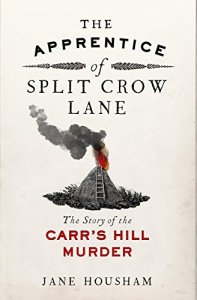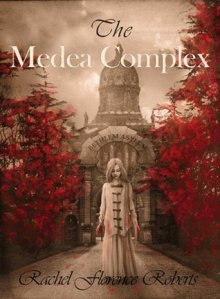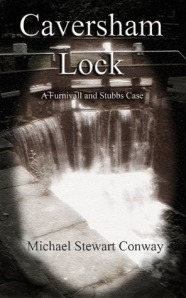
5*s
When I saw that this book was going to be published on 3 November 2016 way back in August my interest was piqued and I took the bold step of telling the publishers riverrun so, they in turn kindly supplied me with copy.
On 13 April 1866 on Carr’s Hill, Gateshead five year old Sarah Melvin disappeared, only for her body to be discovered later by a couple going to the local public house. The crime was a brutal one, the facts horrifying, even at a distance of 150 years but Jane Housham, having come across the case in the course of tracing her family history decided to use it as a springboard to examine not only the crime itself, but the psyche of the accused, the justice system and how the insane were treated in the mid-Victorian age.
The book opens with the background to the case, the journey that young Sarah Melvin is known to have taken on the day of her murder travelling to visit her father who was out seeking work. We are treated to the work of the police following the discovery of the body, its removal to the local inn, as was the custom in those days, and later to her mother’s house where an autopsy was held on the table. The rudiments of forensics were just being employed but this was as far removed from the strict chain of evidence used these days as you can get.
Unlike some historical true crime books, Jane Housham doesn’t re-examine the evidence to put forward a theory of another killer than that tried for the crime, instead she has carried out extensive research into what the make-up of the killer was. Why did he commit such a terrible crime? Was he insane? What she finds isn’t necessarily what we would expect from Victorian justice, a revelation indeed.
Jane Housham uses the contemporary media from that time, she looks at other crimes that were committed on and around Carr’s Hill within a similar time period. She also gives us a flavour of the population of the time, of the haves and the have-nots and really conjures up details of the place where the crime was committed in astonishing detail especially as the area has changed beyond recognition in the intervening years. The log books detailing the prisoner’s incarceration are also provided as well as the few remaining letters surviving from that time which indicate the level of his education as well as the workings of his mind.
Books of this nature which have to be so rigorously researched can often be quite dry as the author seeks to educate the reader, not this one, the prose is lively the tone even without a hint of condescension, the facts are displayed, the author unafraid to pose an opinion and when she is unsure of a statement she’s made, says so. Why the doubts? Because she accepts that at such a distance in time, it is impossible to really know what happened. She has a number of documents, a huge amount of knowledge, but of course there are gaps, the author wasn’t stood in the courtroom listening to the evidence although she has done a good job of spotting the discrepancies in the newspaper reporting, and rectifying some of the minor confusion caused all these years later.
This was a fascinating read, particularly for those readers who like me, are interested in Victorian provision of the criminally insane. To have the words written by those doctors who had not quite relinquished the hold of phrenology but are doing their best to embrace the new liberal ideas surrounding psychiatry at this time, and then in turn reading this in relation to a real case, shows the practical application of thinking in a way the theory espoused at the time never can.
I am truly grateful for the opportunity to read this book, it was enlightening and despite the inevitable feeling of voyeurism in revisiting such a crime, no matter how long ago it occurred. The sheer amount of information to be gleaned from this book on a number of different related subjects was enormous but done in such a clear-sighted manner that made these facts easy to absorb and build upon. I definitely think the author hit her brief of examining the shift in ideas about insanity at this time, illustrating justice in action and sadly the life of a killer, his family and of course poor little Sarah Melvin whose life was cut short.
First Published UK: 3 November 2016
Publisher: Riverrun
No of Pages: 368
Genre: Historical True Crime
Amazon UK
Amazon US




